








FLORIDA KEYS ELECTRIC COOPERATIVE














FLORIDA KEYS ELECTRIC COOPERATIVE












Celebrating 85 Years

















































CEO Michael Shepard
SENIOR VP OF CONTENT Leon Espinoza
EDITORIAL DIRECTOR Chasity Anderson, CCC
DEPUTY EDITORIAL DIRECTOR
Noble Sprayberry
SENIOR EDITOR Jennifer Paton, CCC
FLORIDA CURRENTS EDITORS
Valeri Saldanha Rosa; Sable Riley, CCC
ASSISTANT EDITORS Victoria Hampton, CCC; David Herder, CCC
ASSOCIATE EDITOR
Nina Todea
PUBLICATIONS PRODUCTION
SENIOR MANAGER
Elizabeth Beatty
SENIOR PUBLICATIONS COORDINATOR
Alyssa McDougle
Members acknowledge that $4.49 a year, plus postage, is the cost to publish 12 issues a year of FLORIDA CURRENTS ISSN 23276304 (USPS 8300). Published by Pioneer Utility Resources Inc., 5625 NE Elam Young Pkwy. Ste. 100, Hillsboro, OR 97124—a not-for-profit Oregon cooperative corporation—the magazine serves the communication needs of consumerowned electric utilities in Florida. Preferred Periodicals postage paid at Hillsboro, OR 97123 and at additional mailing offices.
Postmaster: Send address changes to 5625 NE Elam Young Pkwy., Ste. 100, Hillsboro, OR 97124-6422.
HOW TO CONTACT FLORIDA CURRENTS
Subscription services:
Nonmember subscriptions $15 U.S. a year; $25 foreign a year. Prepayment required. Allow 4-8 weeks for first issue. Identify local edition desired. Have a problem receiving your magazine? Utility members should contact their utility office. Nonmembers call 503-357-2105 or email mailingdept@pioneer.coop.
Back issues:
Back issues and extra copies are $3 each, prepayment required. Supply is limited. Identify edition, month and year. Call first to check availability. Contact Pioneer Utility Resources: P.O. Box 1306, North Plains, OR 97133-1306; 503-357-2105; email: mailingdept@pioneer.coop.
DISPLAY ADVERTISING INQUIRIES
American MainStreet Publications 611 S. Congress Ave. Ste. 504 Austin, TX 78704-1714; 800-626-1181 or 512-441-5200; amp.coop.
© 2025 Pioneer Utility Resources. All rights reserved. Reproduction in whole or in part without written permission is prohibited. Direct reprint requests to editor@floridacurrents.com or for more information, visit www.pioneer.coop.








For Florida Keys Electric Cooperative’s 85th anniversary, we recreated a historic moment featuring leadership at our Tavernier Operations Center, while the 1947 image captures FKEC’s fourperson staff at what was then the Tavernier office.
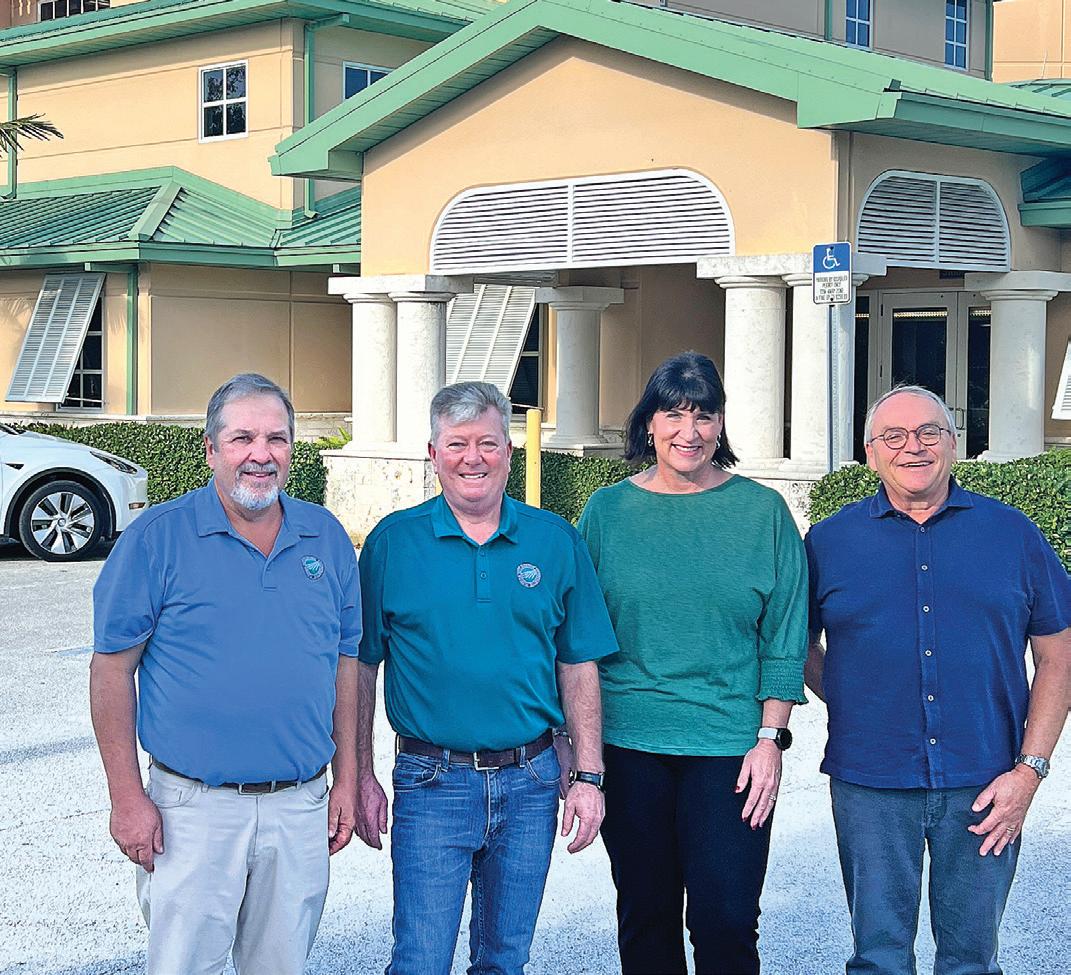






Celebrating 85 Years, Page 4
Time Powers Growth
CEO Report, Page 5
Timing is Everything
Our Past, Present & Future, Page 6
Page 7

Decades of Leadership
Board ofDirectors, Page 8
Celebrating Longevity
20+ Anniversaries, Page 25
The FKEC Team Employees, Pages 26-28
FKEC Finances
2024 Financial Report, Added Insert
Unless otherwise noted, FKEC Annual Report writing, design and photography by Nikki Dunn Cullen, news@fkec.com.

What does it take to become a lineworker?
Up Close, Page 10
They remain a Pasco treasure Spotlight, Page 12
In the Kitchen, Page 16







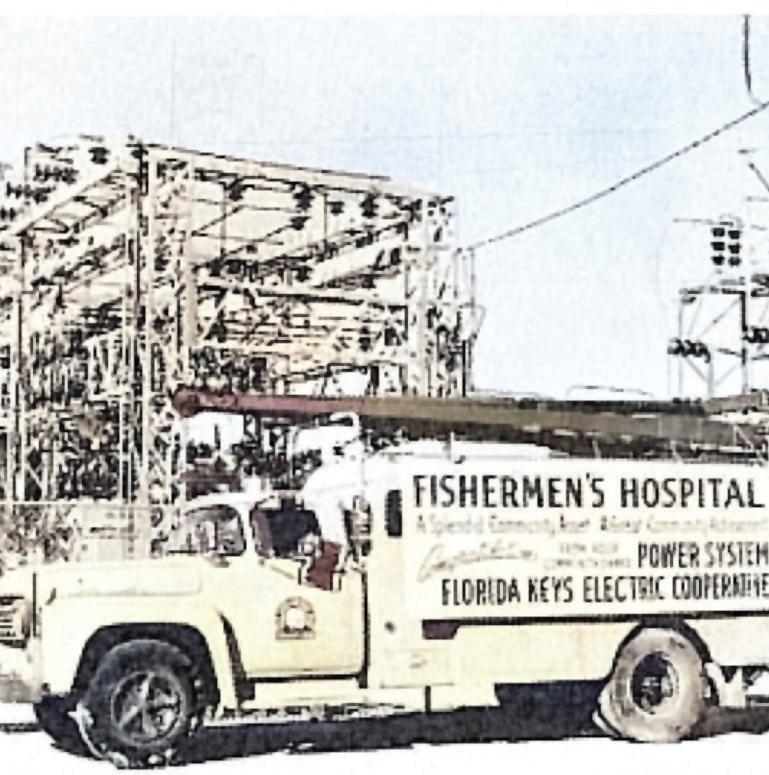
TIME AND TIMING have played pivotal roles in Florida Keys Electric Cooperative’s 85-year journey. Since 1940, FKEC has adapted to evolving technology, infrastructure demands, and the needs of its members. Through hurricanes, population growth, and industry advancements, time has proven FKEC’s resilience, while the right timing has ensured strategic decisions that keep the co-op strong. On the following pages, we reflect on our storied past and honor the work put into FKEC's success.















progress" perfectly sums up FKEC's



to serve as CEO. Ten years later, that feeling remains just as strong. With each passing year, our cooperative continues to evolve—growing stronger, more innovative, and even more committed to serving our members.

















exceptional customer service with 97.5% satisfaction. These efforts are driven by a dedicated team of employees, staff, and board members who work tirelessly to ensure FKEC remains a trusted partner in the community.
















Progress also means preparing for the future. We continue to explore new energy solutions, improve storm preparedness, and strengthen our cooperative's foundation to ensure resilience for generations to come. We work to stay at the forefront of our industry. In recent years, this means learning and researching more about artificial intelligence and atomization as it applies to our industry.


FKEC's journey began with a focus on laying a strong foundation. Just ten years after our inception, we were serving 857 meters. A decade later, that number had quadrupled, and today, we proudly serve approximately 34,000 accounts. From from the 1960s to the 1990s, we worked diligently to keep pace with the growing demands of a booming population. However, growth is not just about expansion; it's about progress. FKEC has never been content with simply keeping up—we strive to surpass our members' needs











and expectations.










Technology has been a key driving force behind our progress in recent decades. We continue the legacy of investing in infrastructure upgrades, enhancing reliability, and adopting advanced technologies that improve service for our members. In 2024, we achieved our highest reliability to date. We also continue to provide








When I started at FKEC almost 35 years ago, I had one of the only Personal Computers in the office. Now, all our employees use a computer or smart device to contribute to operational efficiency. Protecting data has also changed drastically. Today, implementing a cybersecurity program that is as robust as possible is now as important as maintaining a power system that is equally strong—both are paramount.










A constant contributor to our growth and progress is the dedication of our members. And by this, I mean both our FKEC team members and you, our member-consumers. The commitment of our employees to providing reliable service, embracing new technologies, and upholding the cooperative's values has been key to our success. At the same time, the



foundation feedback, serve.













penned his first CEO Report in 2006.










trust and active involvement of our member-consumers inspires us to continually improve and innovate. Your feedback, support, and shared vision for a strong, sustainable future drive us to exceed expectations and meet the needs of the community we


















Time moves quickly, but with it comes the opportunity to grow, improve, and lead with purpose. Thank you for being part of this journey—we look forward to 85 more years of progress.



Since our inception in 1940, FKEC has taken pride in being an influential community partner.



AT FLORIDA KEYS ELECTRIC COOPERATIVE, our story demonstrates that success often hinges on timing. As a forward-thinking utility, we strive to recognize the right moments for action and innovation.
Beginning: Opportunity Meets Determination
Electricity is essential today, but in the early 1930s, the Florida Emergency Relief Administration deemed centralized power impractical for our island community. Local residents knew better but needed the right opportunity to act. That moment arrived through a confluence of events: the creation of the Rural Electrification Administration, which provided structural support, and the 1935 hurricane, which led to the construction of the Overseas Highway and a population boom.
With 300 memberships secured, Florida Keys Electric Cooperative was officially certified by the Florida Secretary of State to bring safe, reliable power to the Upper and Middle Keys on January 22, 1940.
FKEC's expansion has been marked by well-timed decisions. From small generating plants in the 1940s to the game-changing 69,000-volt transmission line connecting to the mainland in 1957, each step answered growing demand. The 1981 linking of Tavernier and Marathon systems created a unified grid, while Hurricane Andrew in 1992 prompted critical upgrades to our transmission system. Each milestone represents growth at the right time.
Since 2006, we've invested over $100 million in storm-hardening our system, including building our Tavernier and Marathon Category 5-rated operation
centers. We pioneered sustainability in the Keys, becoming the first fleet to use biodiesel (2007) and installing the region's first grid-connected solar array (2008). When Hurricane Irma struck in 2017, our preparation and timed decisions paid off—enabling 70% of power restoration within just four days. Today, as we look toward the future with advanced metering and member-friendly SmartHub tools we continue recognizing when the moment is right for action.
As we enter our next era, FKEC is meeting the test of time by strategically investing in technology and automation. For example, the co-op implements "trip savers," smart devices that automatically restore power during temporary faults, reducing outages and the need to dispatch a line crew to make a repair.
From smart grid technologies to preventative maintenance, FKEC continues our legacy of delivering dependable electricity and superior customer service.






Accounts Served: 34,732 (2024) 4,649 (1960)
Average System Load: 121.9mW (2024) 3.7mW (1960)
System Capacity: 329mW (2024) 13.9mW (1960)









FKEC was founded on the determination of a small community seeking reliable electricity in the Upper and Middle Keys. Eighty-five years later, FKEC has achieved its highest level of reliability yet, with an average customer outage time of just 22.7 minutes in 2024.
Achieving 99.999% reliability is a testament to FKEC’s ongoing efforts to strengthen the power system and prevent outages before they occur.
When outages do happen, we utilize advanced outage management tools and technology to minimize the impact and quickly pinpoint the problem.



We thank our members for supporting our efforts to maintain a storm-strong, resilient system through proactive, forward-thinking actions.







System Peak: 171.9mW (2024) 8.1mW (1960)











Average Monthly Use per Consumer: 2,042kWh (2024) 659kWh (1960)




Total Kilowatts Sold: 775,838,369 (2024) 32,000,000 (1960)
Average Retail Cost of Power: 11.8 cents (2024) 3.23 cents (1960)
Substations:







Estimated Cost of a Loaf of Bread: $3.10 (2024) 20 cents (1960)
Total Miles of Line: 896 (2024) 325 (1960)


Miles of Main Transmission Line: 100 (2024) 36 (1960)






Miles of Distribution Line: 796 (2024) 299 (1960)




Marathon (1954)


Tavernier (1957)
Jewfish Creek (1967) Islamorada (1974)




Key Largo (1977) Crawl Key (1999)











Grid Connected Solar Arrays: Marathon (2008) Crawl Key (2009)










For 85 years, our past and present Board of Directors have built a legacy of dedication to representing the members who elect them. The leadership of our current nine directors has shaped a progressive, financially stable utility that continues to meet our members' evolving needs. Their ability to make pivotal decisions at crucial moments—whether in response to hurricanes, a pandemic, or industry shifts—has been instrumental in maintaining FKEC's integrity as the member-focused cooperative we celebrate today. During FKEC's first decade, directors were elected at large without district distinctions. However, in 1950, FKEC adopted a district-based election system, reinforcing its commitment to fair representation—a principle that remains strong today. By requiring directors to be nominated and elected by the members of their home district, our bylaws ensure that every corner of our service territory has a voice and that leadership reflects the unique needs of each community.
Where engineering excellence meets sleek design - a lightweight, safe, customizable, and stylish scooter for UNLIMITED FREEDOM. Numerous scooters with various features and capabilities are on the market, making it crucial to select the one that best suits your requirements.







At the age of 56, a back operation left me dependent on a cane, significantly impacting my daily life. Simple tasks like going to the store or meeting friends became challenging, and I even had to cancel a long-awaited anniversary trip to Italy. My husband purchased a scooter for me, but it was cumbersome and uncomfortable for everyday use, leaving me feeling more constrained than liberated. However, everything changed when I came across the ATTO SPORT. This remarkable scooter proved to be a game changer. Not only is it robust and reliable, but it also conveniently splits into two pieces, allowing me to effortlessly lift it into my car trunk on my own. I was even able to stow it in the overhead compartment on the plane, enabling us to finally take that trip to Italy! I am now independent once more, able to go wherever I please and do so with a striking sense of style. In fact, I now find that my husband struggles to keep up with me!


Independence and convenience: Easy to use and conveniently folds into a compact suitcase size for simple storage. It easily separates into two parts in seconds, with the heaviest piece weighing just 37 pounds, making it easier to lift into your car trunk.


Go anywhere: Conquer any terrain with puncture-proof, shock-absorbing tires and a 4-inch ground clearance. Equipped with electronic stability control for added safety on descents and turns, it is also flight-approved, ideal for air travel and cruise ships. With a driving range of up to 12.5 miles (25 miles with the XL battery), a top speed of 6.2 MPH, and a maximum weight capacity of 300 pounds, this durable scooter is designed for longevity.
Top-Notch Engineering: Guaranteeing both comfort and durability, this scooter offers ample legroom and a big comfortable seat. The ATTO is super portable and lightweight, and still rides like a heavy-duty scooter.
Unmatched Stylish Design: You deserve a mobility solution that doesn't just get you from A to B but makes you feel great while doing so. ATTO stands out from the crowd with its stunning design.

Airline approved. Spacious legroom, comfortable seat

Splits into 2 lightweight parts for easy lifting

suitcase
DON’T WAIT!
Call today and get a free front/rear basket and phone holder with your new ATTO SPORT purchase!











What does it take to become a lineworker?
By Jen Calhoun
Taylor Hammack was wiring houses for a living around the time Hurricane Michael made landfall along the Florida Panhandle in 2018. The Category 5 hurricane flattened homes and businesses, destroyed infrastructure and left at least one town along the Gulf Coast in ruins.

The ordeal sparked something in Taylor as he drove to work one day.
“It was about three or four days after Michael hit, and I saw all these line crews on the side of the road getting the power back up,” he says. “Just seeing them do that after something catastrophic had happened—I thought, ‘That’s what I want to do.’ To me, it was a way to help people when they’re in need.”
Soon after, Taylor was hired as an apprentice lineworker at Gulf Coast Electric Cooperative, which put him through a four-year training program with Tennessee Valley Public Power Association. Today, Taylor is a journeyman lineworker.
Lineworkers install, maintain and repair power lines and



equipment on utility poles and underground electrical systems. It’s a tough but rewarding trade that usually requires three to four years of training to achieve rank as a fully qualified journey-level lineworker. A few other qualities are important, too, say lineworkers across the country.

Since the first electric wire was strung, lineworkers have held an important role in modern America. When disaster strikes, they’re the ones who get the lights back on. They work along city streets, farmlands and wilderness.

The job can be difficult and sometimes dangerous, but the rewards are excellent, says Nick Hagen, a journeyman lineworker at Northern Lights Inc. in Idaho.
“I like the appreciation the community gives us, especially after we get the power back on after three days, four days or even 10 days,” he says. “It’s a fulfilling job.”




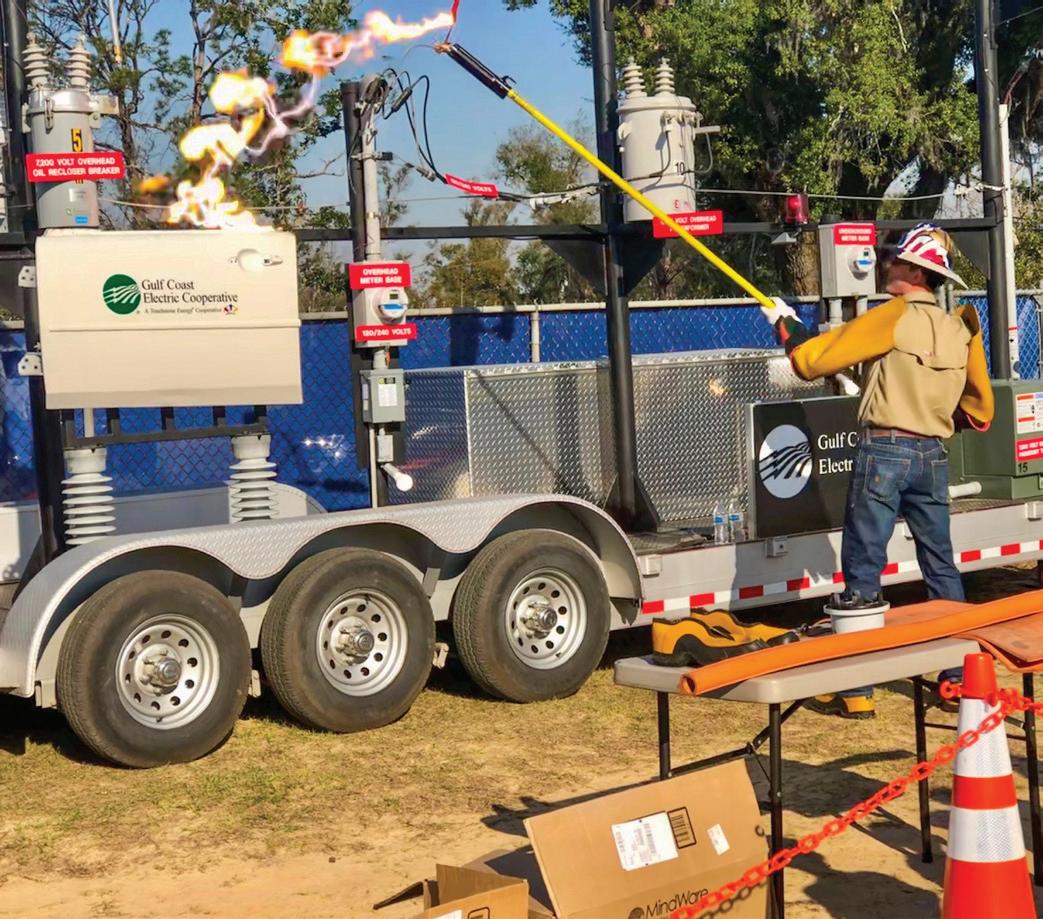
Nick remembers pulling up near a house to repair power lines one Christmas Eve.
“They had been out of power for days,” he says. “Once I finished, I remember seeing their Christmas lights come back on. I thought that was pretty cool.”
The pay is good, too, he says. Nick was making ends meet as a valet at a hotel when he first learned about the trade. He wanted a better life for his family, and linework fit the bill. It also gave him a chance at retirement.
“Getting a good job with a retirement where you could actually enjoy your life after work? Nobody had ever really talked about that to me,” he says.
While compensation and benefits vary for lineworkers depending on location, experience and other factors, the Occupational Outlook Handbook published by the U.S. Bureau of Labor Statistics reports the median pay in 2023 was $85,420 per year, or $41.07 per hour. However, those figures represent the middle of the pay range, and they don’t take into account overtime hours and additional jobs helping other utilities in the aftermath of storms—all of which can result in additional income.
Joining the trade means learning various—and oftentimes difficult—technical skill sets in and out of the classroom, all while maintaining a certain level of physical fitness, says David Bogue, a journeyman lineworker with Florida Keys Electric Cooperative.
Not only do lineworkers need to know how electrical systems work, they’re also required to learn numerous safety techniques. In addition, lineworkers climb utility poles wearing heavy toolbelts in all kinds of weather. The job requires working days and nights, depending on schedules and needs.
“Everybody’s story is a little bit different. Everyone gets into the trade in their own way.”
EVAN PETERS, LINEWORKER AT BENTON REA IN WASHINGTON
“I would say becoming a journeyman is an attainable goal, but it’s a hard goal,” David says. “But, as someone once told me, I could throw a dart at a map and go get a job there. Also, the skills I’ve learned are not going to be replaced with AI anytime soon.”
Lineworkers can get their start by attending training schools, taking community college courses or working at a local utility in other capacities, such as a groundworker. Rudy Vega, a journeyman lineworker at FKEC, got his start doing right-of-way work with the cooperative 23 years ago.
“I had been working in a tree group there just under two years when the opportunity came up to be an apprentice lineman,” Rudy says. “They approached me and asked me if I was interested, and I said, ‘Definitely. I’ll give it my best.’ ”
Evan Peters, a lineworker at Washington’s Benton Rural Electric Association, was fighting wildfires when he first learned about the trade from a group of lineworkers.
When he expressed an interest in the job, one of the men suggested he attend a lineworker school. After graduating, he took a job at Benton REA.
“I like that it’s something new every day,” Evan says. “I like that I get to work outside with my hands, especially at a local utility. It can be really fulfilling.”
When it comes to joining up, however, Evan suggests those interested ask around before they jump in headfirst.
“I would tell them to reach out to local linemen,” he says. “Ask them how they did it. Everybody’s story is a little bit different. Everyone gets into the trade in their own way.”
Must-haves:
Be 18 years of age.
Hold a high school diploma or GED.
Maintain a valid driver’s license.
Able to work at heights and lift heavy equipment.

Getting started?
Every lineworker has a story about how they got started, and there are many pathways to taking the job. Here are a few ways to make it happen:
Join an apprenticeship program at a local utility.
Enroll in a lineworker school or training program.
Start at a utility as a groundworker or other job.


By Cheré Coen



The sun warmed our faces on the Gulf waters as Capt. Mark Dillinghan puttered us down the Pithlachascotee River—what locals in Pasco County call the Cotee. Mark leads fishing charters through his Inshore Adventures, but on this morning, we set out to fish for history.
We gingerly motored the river past both modest homes and luxurious estates, and Port Richey seafood restaurants. Beneath our boat, manatees escaped winter’s chill. As the river widened, mangroves appeared—some providing nesting areas for pelicans and perches for cormorants.
At the river’s mouth, one of the most unique sights in Florida emerged—the stilt houses of Pasco County.
These rugged buildings were established in the early years of the 20th century, when commercial fishermen pulled in mullet. The fish were transported using boats propelled by poles, so having a spot to store a haul for several days proved useful. The structures also served as refuge from sudden thunderstorms.

It’s not clear when the stilt houses—then called fish camps— were first built over the water in Pasco County, but local historian Jeff Miller estimated they first appeared between 1916 and 1918. Jeff, who died in 2022, spoke with stilt house owners who said the early fishermen “found a spot they liked, and built a home,” in his book, “History of Pasco County: Stilt Houses in the Gulf of Mexico.”
With the advent of motorboats, these unique buildings above the Gulf became more common as vacation homes than storage spaces.
“The move from fishing camp designs to family dwellings took off after World War II,” Steve Kornacki wrote in a 2005 Tampa Tribune article titled “Houses Built for Fishing.” “The Allgood, Baillie, Bennett, Grey, Haines, Helms, Jones, Little, Sawyer, Stevenson, Swartsel, Thiel and Warburton families were among those building about that time.”
Over time, the number of stilt houses grew. By the 1960s, about 24 dotted the waters off the coast of Pasco County, serving both as fishing spots and vacation retreats. Country music legend Johnny Cash and his wife, June Carter, visited the area often. June’s family long had a bungalow off the Cotee River, and the couple once fished off the stilt house of good friend and


Florida resident Des Little. On one occasion, the couple also enjoyed the waters with the Rev. Billy Graham.
In 1962, Ralph Bellwood described life on the stilt houses in his book “Tales of West Pasco.”
“In the summer particularly, they are occupied on weekends, holidays and vacations,” he wrote. “They are delightfully cool and offer relaxation and peace to their occupants. One can always catch a mess of pan-fish for supper from the deck or get in their boats and cast about over the flats, bringing in trout and other larger fish. Truly, these unusual cabins on the water offer a retreat to the tired and weary as well as the fun-seeking carefree who want to let their hair down, and more or less go native.”


“Native” it was—and still is. A visit to a stilt house is not all that different from primitive camping.
Bathrooms must be set apart from the main structure and not connected to Gulf waters, so waste disposal is akin to a bilge on a boat or an RV. In other words, wrap it up and take it with you. There’s no electricity unless a generator is hauled in, and cooking usually involves a propane stove. Best leave the cellphone at home.






Ruth Carley described a stilt house owned by the Allgood family in a 1973 article for the St. Petersburg Times. The family built the “home on water” in 1949. It was used for vacations with family and friends.
The house featured a large room with beds at one end to catch the cross-breeze and two couches at the other end. The kitchen had an old-fashioned water pump, and in the center was the “congregating place” with a table big enough for 25 people. A shelf around the wall and a platform on the rafters provided storage.
Anita Kilpatrick, writing for the St. Petersburg Times in 1986, quoted stilt house owner and Leesburg resident Dale Jones, who used his camp to get away from working life.
“It’s just a relaxing place,” Dale says in the article. “We can forget about the telephone, and we can forget about television. We can forget about business.”



Basically, these were just little houses where people could stay and fish, Mark explains as he rounds the first of nine houses that remain today. “They were handed down over the generations and are still in use now,” he says.
For a while, at least.
After Hurricane Gladys destroyed many of the stilt houses in 1968, the Florida Legislature prohibited building new ones on open water. Those that
remained were “grandfathered in” with a demolish date of 1999, which was later rescinded.
Today, if a hurricane or other natural event damages a property, rebuilding is allowed only if it’s less than 50% restoration. Too much damage, and owners cannot rebuild. For those that have fallen to nature’s fury, only white poles remain in the water.
The remaining stilt houses are mostly constructed of marinegrade lumber, which “holds up pretty well,” Mark says. In the early days, cypress, a wood that can withstand water intrusion, was brought out by boat.
“Now, that’s an absolute no-no,” says Raul Nardi, marketing and communications manager at Florida’s Sports Coast tourism bureau, which includes Port Richey. “The state won’t let you cut down cypress.”
The pilings on which the stilt houses rest are made of wood as well, but one house features added concrete to its foundation and dock.

“That’s a new thing—to put concrete on the poles,” Mark says. “It keeps the barnacles from rotting the poles.”
These unique and historic fish camps won’t last forever. In time, nature will find a way to erase them from the Gulf waters off Port Richey. But until then, they stand as an iconic symbol of Pasco County. To celebrate the town’s 100th anniversary this year, for instance, the city placed one of its beloved stilt houses on the centennial logo.







Garlic and Rosemary Grilled Lamb Chops
2 pounds thick-cut lamb rib chops
4 cloves garlic, minced
1 tablespoon fresh rosemary, chopped
1 tablespoon Dijon mustard
1¼ teaspoon kosher salt
½ teaspoon ground black pepper
Zest of 1 lemon
¼ cup olive oil
Combine the garlic, rosemary, Dijon mustard, salt, pepper, lemon zest and olive oil in a measuring cup.
Pour the marinade over the lamb chops, flipping them over to cover completely. Cover and marinate the chops in the refrigerator for at least one hour or up to as long as overnight.
Let the lamb chops come to room temperature before grilling.
Grill the lamb chops on medium heat for 7 to 10 minutes or until the internal temperature reads 135 F.
Allow the lamb chops to rest on a plate covered with aluminum foil for 5 minutes before serving.

2 pounds fresh asparagus
2 tablespoons olive oil
¼ teaspoon freshly ground black pepper
Heat oven to 400 F.
½ teaspoon kosher salt
½ cup freshly grated Parmesan cheese
2 lemons, cut in wedges
If the stalks of the asparagus are thick, peel the bottom half of each. Lay them in a single layer on a sheet pan spread with aluminum foil. Drizzle with olive oil. Sprinkle with pepper and salt.
Roast until tender, about 15 to 20 minutes. Sprinkle with Parmesan cheese, and return to the oven for another minute. Serve with lemon wedges.
2 pounds Yukon gold potatoes, peeled and cut into chunks
Salt
¼ cup heavy cream
4 tablespoons unsalted butter, divided
¼ teaspoon nutmeg
½ teaspoon black pepper
3 large egg yolks
Place potatoes in a medium to large pot, and cover with a few inches of cold water. Add a few teaspoons of salt to the water. Bring to a simmer. Cook until the potatoes are forktender, about 20 to 25 minutes.
While the potatoes are boiling, melt 2 tablespoons of butter, and set aside. You will use this butter to coat the potatoes right before they go into the oven. Heat the oven to 425 F.
When the potatoes are cooked, drain in a colander. Put the potatoes back in the pot, and set over low heat. Allow them to release steam for a minute or two.
Add 2 tablespoons of butter, and mash the potatoes until the butter has been incorporated. Add the nutmeg, black pepper and heavy cream. Continue mashing the potatoes. Once everything is incorporated, add salt to taste. Add the egg yolks. Continue to mash until the mixture is smooth. Do not over-mash, or your potatoes will end up with a gluey consistency.
Put the mashed potatoes in a piping bag with a large star point. Pipe the potatoes onto a cookie sheet. Brush the swirled edges with melted butter so they brown nicely in the oven.
Bake until nicely browned, about 20 minutes. Serve hot from the oven.
Salad
10-ounce bag baby spinach leaves, rinsed and drained
½ cup walnut pieces
½ cup crumbled feta
Vinaigrette
¼ cup aged balsamic vinegar
¼ cup extra-virgin olive oil
2 to 3 tablespoons honey
¼ medium red onion, sliced thin
¼ cup alfalfa sprouts
½ cup pomegranate seeds
2 teaspoons Dijon mustard
½ teaspoon dried thyme
1 clove garlic, minced
Salt and pepper
Combine all vinaigrette ingredients. Shake well.
Place spinach in a salad bowl. Top with walnuts, feta, red onion, alfalfa sprouts and pomegranate seeds. Drizzle with vinaigrette.
1 package yellow cake mix
3.4-ounce package instant pistachio pudding mix
Icing
3.4-ounce package instant pistachio pudding mix
1 cup cold heavy whipping cream
¾ cup cold whole milk
Heat oven to 350 F.
4 large eggs
1 cup club soda
½ cup canola oil
2 teaspoons confectioners’ sugar
½ cup chopped walnuts for garnish
In a large bowl, combine the cake mix, pudding mix, eggs, soda and oil. Beat on low speed for 30 seconds. Beat on medium for 2 minutes.
Pour into a greased and floured 10-inch fluted tube pan. Bake for 40 to 45 minutes or until a toothpick inserted in the center comes out clean. Cool for 10 minutes before removing from the pan to a wire rack to cool completely.
To make the frosting, beat the pudding mix, cream, milk, and confectioners’ sugar on high in a large bowl until stiff peaks form. Frost cake. Sprinkle with walnuts. Refrigerate until serving.
Story and photo by Dave LaBelle
As a small child, I was spellbound by giant rainbows stretching across the valley near our home. The magnificent bands of glistening colors felt so close I could almost touch them, bathe in them. Believing there was a pot of gold buried where each end of the rainbow touched the earth, my siblings and I sometimes raced barefoot across the fields hoping to find the treasure before the magical bow disappeared.
I’m not sure at what age I outgrew the legend of hidden treasure. Perhaps it was the same time I began questioning the Easter Bunny?
Sadly, as I grew older and wiser, the awe I once had for those fading, magical colors also disappeared. As a teenager, rainbows no longer held the same allure.
But then, not long after my mother disappeared in floodwaters and our home was washed away by endless days and nights of torrential rains, I was reading in the book of Genesis how God set a bow in the sky after the great flood as a sign the Earth would never again be destroyed by water. As you can imagine, the story stirred my heart, and I have never viewed a rainbow the same since. And soon that mystery—that childhood wonder—even returned.
I believe rainbows will forever capture our imagination.
Whether you believe the Bible story or are simply touched by those colorful, curved ribbons of light stretching across the sky or magically appearing in the mist above a lake or river, there is something beautifully comforting and hopeful about seeing a rainbow appear.

Photographer, author and lecturer Dave LaBelle has captured special moments for more than half a century, sharing photo tips and life perspectives with readers. For more of his writings, visit davidlabelle.com and his blog at bridgesandangels.wordpress.com.
NIKON D810 70mm lens ISO: 125 f/5 at 1/640

Including an interesting foreground creates scale, depth and dimension. A vibrant rainbow can be the star of your photograph or an unexpected accent to complement an already colorful scene, such as pitcher Max Steffens, of Epworth, Iowa, competing in a semipro baseball tournament.
Keep your camera close and be ready as storms clear and rains cease. Often after a rainy day, clouds part before a sunset, and a rainbow alone can be a breathtaking sight.
Email your best image (just one, please) with caption information, including an explanation of how it affects you, to gph@pioneer.coop. We may share submissions on our website and social media channels.





















Most Florida anglers probably started fishing as children by dangling worms or crickets under floats to catch bluegills and other bream species. This old method will always work, but for more of a challenge, try casting lures for small scrappers.
Among the most versatile lures on the market, spinnerbaits catch fish from top to bottom all year long and can go many places where other lures can’t go. Many bream anglers throw small “beetle” spinners, also called “harness” or “jighead” spinners.
Such baits consist of a wire harness holding a spinner blade attached to a jighead. Anglers can slip an infinite number of small soft-plastic trailers onto the hook. Since the components separate, anglers can easily switch blades, arm sizes, jigheads or trailers as they wish. For added enticement, tip the hook with a colorful scent pellet.
A beetle spinner can catch bream from the surface to the bottom. Retrieval speeds determine how deep the lure runs. Simply toss the lure to grassy edges, lily pads, logs, or other cover that might hold fish and work it back to the boat.
Around thick grassy patches, buzz beetles over the top so the blades churn the water or wake the baits just below the surface. The commotion might bring fish up from the depths. Around submerged grass, run the bait just over the blade tops. Occasionally, pause so the lure sinks a bit into the grass. Then, pull it back up.
Bluegills and other bream species live in just about every freshwater system in the Sunshine State. Bluegills spawn from spring through early fall. They scour beds in the bottom and vigorously defend their nests. Run a beetle through the nests for hot action.
As weather warms, fish might head a little deeper for more comfortable temperatures. In deeper water, barely turn the reel handle, just enough to make the blades flicker. Run the lure just above the bottom. Also try the stop-and-drop method. Pause the retrieve periodically to let the bait sink 1 or 2 feet. As the bait slowly sinks into the water, the blades continue revolving, creating flash and vibrations. Fish commonly hit lures as they sink.
Sloping banks and drop-offs make great places to fish. Bream can move up and down in the water column as they desire. Bream commonly hover just over the drop-off edges looking to ambush passing prey. Run a spinner on the deep side of the drop-off parallel to the edge.


ABOVE: Amy Gable shows off a bluegill she caught on a beetle spinner while fishing a backwater off Dead Lake near Bunnell.
LEFT: A beetle spinner makes a great bait for tempting panfish, such as this redear sunfish, also called a shellcracker for its fondness for eating snails.
PHOTOS COURTESY OF JOHN N. FELSHER
As we progress into summer, fish regularly seek shelter under docks, trees, bridges and other features that cast shadows on the water. Any shady spot makes a great place to throw a beetle spinner.
Easy to master and inexpensive, fishing with small beetle spinners on ultralight tackle offers an excellent and fun way to introduce children or novice anglers to the sport. In the right spot, anybody could catch good numbers of feisty fish. Although small, bluegills and other bream species will outfight anything in the water, ounce for ounce. n

John N. Felsher is a freelance writer, broadcaster, photographer and editor. An avid sportsman, he’s written more than 3,500 articles for more than 170 different magazines on a wide variety of outdoor topics. He also hosts an outdoor tips show for WAVH-FM Talk 106.5 in Mobile, Alabama. Contact him at j.felsher@hotmail.com or through Facebook.


Centuries ago, Persians, Tibetans and Mayans considered turquoise a gemstone of the heavens, believing the striking blue stones were sacred pieces of sky. Today, the rarest and most valuable turquoise is found in the American Southwest–– but the future of the blue beauty is unclear.
On a recent trip to Tucson, we spoke with fourth generation turquoise traders who explained that less than five percent of turquoise mined worldwide can be set into jewelry and only about twenty mines in the Southwest supply gem-quality turquoise. Once a thriving industry, many Southwest mines have run dry and are now closed.
We found a limited supply of turquoise from Arizona and purchased it for our Sedona Turquoise Collection . Inspired by the work of those ancient craftsmen and designed to showcase the exceptional blue stone, each stabilized vibrant cabochon features a unique, one-of-a-kind matrix surrounded in Bali metalwork. You could drop over $1,200 on a turquoise pendant, or you could secure 26 carats of genuine Arizona turquoise for just $99.
Your satisfaction is 100% guaranteed. If you aren’t completely happy with your purchase, send it back within 30 days for a complete refund of the item price.
The supply of Arizona turquoise is limited, don’t miss your chance to own the Southwest’s brilliant blue treasure. Call today!
Jewelry Specifications:
• Arizona turquoise • Silver-finished settings
Sedona Turquoise Collection
A. Pendant (26 cts)
$299 * $99 +s&p Save $200
B. 18" Bali Naga woven sterling silver chain $149 +s&p
C. 1 1/2" Earrings (10 ctw) $299 * $99 +s&p Save $200
Set** $747 * $249 +s&p Save $498
**Complete set includes pendant, chain and earrings.



All ages can find something new and exciting around every corner of the state. Filled with rich history, abundant natural beauty and diverse events all year, Florida has something fun for everyone.
April 5
Palafox Market


Find unique, precious, delicious and offbeat items at Palafox Market. On-site vendors grow, make or create each item for sale. Join us 9 a.m. to 2 p.m. every Saturday, rain or shine, for farm-fresh produce, plants, flowers, baked goods, hand-crafted works of art, sculpture, fresh tea and coffee, food and spices, hand-blown glass, ceramics and more at the event named Florida’s Best Farmers Market by Southern Living magazine. https://downtownpensacola.com/palafox/palafox-market; 850-380-8196
April 5-6
Sebring Soda Festival
Float over to the seventh annual Sebring Soda Festival for a family-friendly party atmosphere that offers more than 200 craft sodas to sample, craft beer and wine, and soda drinking contests. With Soda Pop Princess skits, live music and festive food, this is the fizziest festival in all of Florida. https://sebringsodafest.com; 863-385-8448
April 11
Outdoor Movie Night
Join us at dusk for a free outdoor movie night at Fort East Martello. Enjoy food from our vendors, including fresh-squeezed lemonade, frozen treats and all your favorite snacks. Don’t forget the free popcorn, courtesy of First State Bank of the Florida Keys, which benefits the Key West High School. Invite your friends, bring your blankets and chairs, and let’s make this outdoor movie night one for the books. https://bit.ly/3DjUTrn; 305-814-2789
April 12
Deluna’s Open Water Swim 2025


Join us on Pensacola Beach for the annual DeLuna’s Open Water Swim. Pick the 0.6-, 1.2- or 2.4-mile swims to challenge your skill and speed in clean protected waters in the Santa Rosa Sound. As legend has it, Don Tristan de Luna—a 16th-century Spanish conquistador who led an ill-fated expedition to the Pensacola area in 1559—is credited for America’s first settlement. A scroll of de Luna’s was recently discovered in the sand of Pensacola Beach outlining a competitive open water swim they were planning. Unfortunately, a hurricane changed the course of Pensacola’s history, wiping out the settlement, thus never allowing the swim to take place. Our event is an effort to continue what de Luna started.
www.pensacolasports.org/delunasswim; 850-434-2800
April 12
Full Moon Yoga
Meditate and relax under the glow of the full moon on Sunrise Point at Three Waters Resort and Marina. Zenfully Aware Yoga, the Islamorada Resort Collection, and I.CARE bring participants on an adventure. The yoga practice centers around how the moon affects coral reefs, queuing coral spawning each year and the start of a new life for one of our planet’s most precious ecosystems. The class is complimentary for resort guests, but a donation is suggested for I.CARE, which is dedicated to restoring the reefs of Islamorada, including the world-famous Alligator Reef. Admission for nonguests is $25 per ticket.


April 5-6
33rd Annual Florida Keys Island Fest
The 33rd Annual Island Fest event returns to Founders Park (MM 87), featuring an art show, live music, food and classic cars. The Arts and Crafts Show showcases artists whose works include paintings, sculptures, jewelry, fine crafts and driftwood carvings. The Smoked Fish Dip Contest returns by popular demand. Also returning this year is the All-American Road Vintage Cruisers Car Show. Children and adults can help paint a life-sized dolphin statue and compete in HulaHoop contests while giant kites fly high in the sky. Admission is free, and on-site parking is $5. The Islamorada Chamber of Commerce encourages the public to “Keep the Scene Green” and bring reusable drink containers to reduce plastic use during the event.
https://islamoradachamber.com/island-fest; 305-664-4503

https://bit.ly/3Fk3F9m; 844-918-0516







April 12
Swim Across America
Join Swim Across America for the fourth annual Florida Keys open water charity swim from 8 a.m. to noon at the beautiful Founders Park. The halfmile, 1-mile and 2-mile swims will be available. A children’s splash will be offered, and several Olympians will attend as angel swimmers for those who may want a little help. Proceeds support cancer research at Miami Cancer Institute.
www.swimacrossamerica.org/floridakeys; 949-292-7897
April 19
Earth Day 5K Run/Walk


Join us at 8 a.m. for the 26th annual Earth Day 5K Run/Walk. The event benefits the Conch Republic Marine Army, an organization working on cleaning and restoring the mangrove habitats of the Florida Keys. The run begins and ends near the Ingham ship, following three loops of the promenade at Truman Waterfront Park. Awards are given for age-group winners. All participants are entered into a raffle for local prizes. T-shirts are available to the first 100 participants.
https://southernmostrunners.com; 619-961-3017
April 19
Music in the Park
Join the Friends of Highlands Hammock State Park at 7 p.m. for rocking rhythm and blues by J.P. Soars and The Red Hots. Bring blankets, lawn chairs and flashlights to enjoy an evening of music under the stars. Don’t forget the mosquito spray on warmer evenings. Refreshments and food will be available for purchase from an on-site food truck and the Hammock Inn Camp Store. Admission for all concerts is $15 per adult—campers and dayto-day visitors. Accompanied children 12 years and younger get in free of charge. Pets are not permitted. https://friendsofhighlandshammockstatepark.wildapricot.org; 863-386-6094


April 19
Keys Community Concert Band
Bring a chair or spread out a blanket as the band performs Conch Classics, featuring music from throughout the ages. The concert starts at 4 p.m. at the ICE Amphitheater at Founders Park (MM 87). Admission is free. keyscommunityconcertband.org; 305-394-1123
April 26
Blueberry Festival
Join the Avon Park Rotary Club for the 14th annual Avon Park Blueberry Festival. This free and family-friendly event features original arts and craft vendors, live bluegrass entertainment, a cornhole tournament, a kids’ zone, car cruise-in, food trucks and more. Don’t miss the Amateur Blueberry Bake-Off. Winners for youth and adult divisions will be announced during the festival with monetary prizes for the top three finishers in each division. It’s free to enter the competition.

https://bit.ly/41TNsQP; 863-414-1733



April 5
Annual Spring Fling

The Crafty Cats at First United Methodist Church have been busy. You are invited from 9 a.m. to 2 p.m. to shop for plants, yard ornaments, garden decor, decorated pots and seasonal crafts. Hot dogs, fresh off the grill, will be available for $5. Chips and a drink are included in the price.
fumclw.org; 863-676-2516
April 30-May 1
Jeff Leonia Reel and Steel Classic
The tournament kicks off at 6 p.m. April 30 at Safe Harbor Angler House. The grouper/hogfish tournament starts at 7 a.m. May 1 and has categories for men and women in scuba, free dive and rod/reel in memory of Jeff Leonia. A fun category for snapper is also included in the event. Registration is $150. Children 12 and younger fish for free. Proceeds stay in the Keys, supporting local endeavors.

www.livelikejeff.com; 919-414-4300

Want to share a family-friendly event with the readers of Florida Currents? Head online and enter the details at tinyurl.com/FloridaCurrents or use the QR Code for easy access. Make sure to submit the item at least 60 days before the event (due to press deadline). If you own rights to a print-quality photo promoting your event, include it with photo credit information.







When you’re looking to lower your water bill, you might be wondering the best way to maximize your water savings.
If you have an in-ground irrigation system for your lawn, this is a great place to start. Research shows that for homes with an in-ground irrigation system, outdoor water use can be the biggest reason for high water bills. Every time the average-sized yard in Florida is watered, it uses at least 1,000 gallons of water, according to University of Florida research. You would have to take a shower for more than eight hours to use that much water.
To save water used on your landscape, start by looking at how frequently you water your property.
Your irrigation timer should be set to water no more than twice a week. In the winter, your lawn goes dormant and won’t need water more than once a week. However, the best method is shutting off your automatic irrigation system and turning it on only when needed.
Signs your lawn needs water include your footprints staying in the grass for a long time or leaf blades being folded in half lengthwise. By not overwatering your yard, you also increase drought resistance and reduce pests and fungal problems.
You can prevent wasting large amounts of water by stopping leaks quickly. Turn on your irrigation system seasonally to check for puddles of water and broken sprinkler heads. Check your sprinkler heads to make sure they’re not watering your sidewalk or driveway. They may even be turned the wrong way, missing your yard completely.
Also, check that you have a working rain sensor device to make sure you’re not irrigating when rain has already done the job.

Finally, most established plants don’t need to be watered regularly, and you likely can turn off those irrigation zones.
To easily save water, design a yard that doesn’t need much water to begin with. You can use mulch, choose drought-tolerant plants and plant landscaped beds instead of grass.
Plants with similar water needs should be grouped together to make it easier to get them the right amount of water. The FloridaFriendly Landscaping program is a great resource for making sure you have the right plant for the right place.
Once you’ve tackled your outdoor water use, begin looking for ways to maximize savings indoors.
For some homes, the toilet could be the best way to save water. A small toilet leak could add up to hundreds of gallons of water, and older toilets can use more gallons per flush than newer ones.
Other ways to save water include low-flow shower heads that can cut your shower water use in half. Faucet aerators can do the same for your sinks.
Beyond reducing your utility bill, saving water helps protect springs and valuable Florida resources for generations to come. For more ways to save water and make your landscape Florida-friendly, reach out to the UF/IFAS Extension office in your county.

Kaitlin Robb Price is a project manager for H2OSAV: Water Savings, Analytics and Verification, a UF/IFAS Extension program focused on measurably saving Florida water. She has a master’s in mass communication from the University of Florida, as well as a B.S. in business administration from Auburn University.






FKEC celebrates the invaluable contributions of our veteran employees, whose years of dedication have shaped the cooperative’s success. Their experience, passed down through generations, ensures continuity, growth, and resilience. By sharing their knowledge they uphold a legacy of collaboration and hard work that stands the test of time.



















































































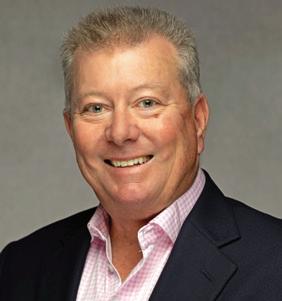




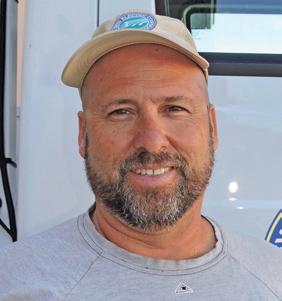








































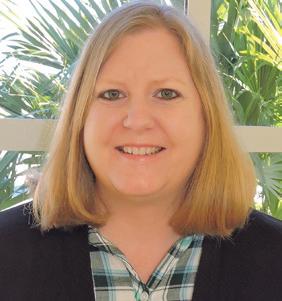



















FKEC's executive officers, staff and department supervisors put in the time working in harmony to deliver reliable, cost effective, environmentally responsible, and safe electrical power with exceptional customer service. Each employees' unique contribution has strengthened our ability to serve you, our valued members.











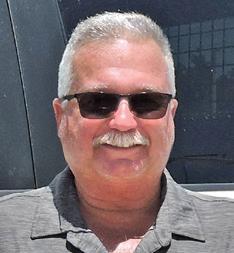
















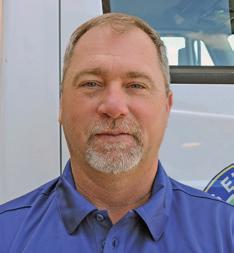
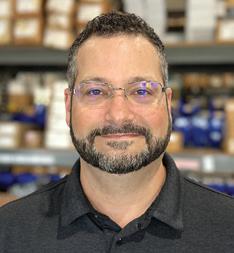









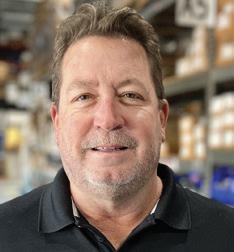





Lineworkers brave ice, re, oods and storms, Thank you doesn’t quite cover it.



Organized by department, these dedicated employees contribute their time and expertise to FKEC’s success, achieving a 97.5% Customer Satisfaction rating in 2024. Executive directors, staff and department supervisors are listed on page 26.








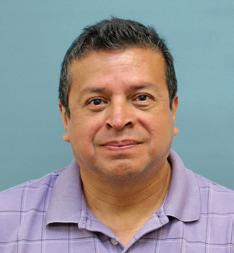


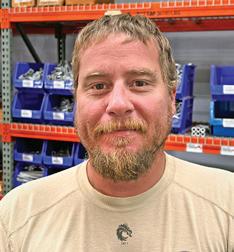







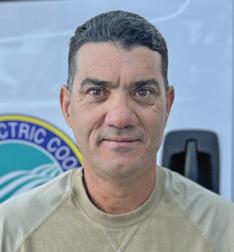




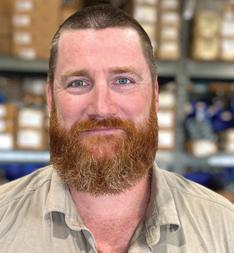









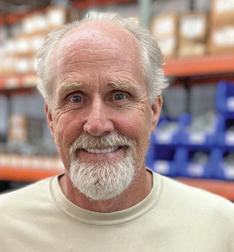


























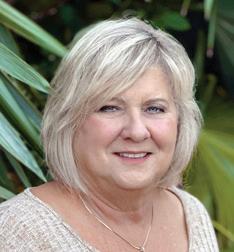
These are the people employed at FKEC as of March 1, 2025. Department leaders or crew leaders are highlighted in red.



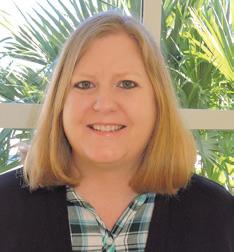
















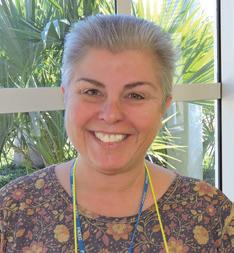









Florida’s geography is vast and beautiful, from lakes to oceans and parks to beaches. Some of you have views from your homes that rival the views of national parks.
From time to time, we share some readers’ photos in this space. If we use your photo here, we will send your choice of a $25 gift card to REI or Amazon.
To submit your photo, email a JPEG file to photos@floridacurrents.com. Include “Before You Go” in the subject line. Please share a bit about what inspired you to make your photo.




Church/Government uniting, suppressing RELIGIOUS LIBERTY enforcing NATIONAL SUNDAY LAW Be informed! TBSM, PO Box 374, Ellijay, GA 30540. tbsmads@yahoo.com 1-888-211-1715 Celebrate Earth Day with Solar by SALT ENERGY
• Feel the renewal of your energy bills this Spring
• Embrace longer days and let the sun power your home
• Budding savings on your electricity costs
• Blooming clean energy production for a greener future
• Experience the spring of a new era in home energy with solar power
SALT ENERGY is located in the center of the Keys and has been engineering, installing and servicing Solar systems in the Keys and Caribbean for over 30 years.
We are local experts in Solar Design, optimized for our Island environment. Be part of the Keys sustainable / renewable energy movement with CLEAN
.





IguessI was a little bored. For the past hour, I’d been on the phone with Daniele, the head of my office in Italy, reviewing our latest purchases of Italian gold, Murano glass and Italian-made shoes and handbags.
“Daniele,” I said, “What is the hottest jewelry in Italy right now?”
His reply? Woven gold bracelets studded with gems. He texted me some photos and I knew immediately that this was jewelry that Raffinato just had to have.


Presenting the Italiano Fantasia Bracelets, two designs that are prime examples of Italy’s finest artisanship. Each of these bracelets includes more than 20 brilliant cut gems of DiamondAura®, our Ultimate Diamond Alternative®, in a setting finished with 18 karat Italian gold.
What is DiamondAura®? Why, it’s a sparkling marvel that rivals even the finest diamonds (D Flawless) with its transparent color and clarity: Both are so hard they can cut glass. Don’t believe me? The book “Jewelry and Gems: The Buying Guide,” praised the technique used in our diamond alternative: “The best diamond simulation to date, and even some jewelers have mistaken these stones for mined diamonds,” it raved.



The best part about these bracelets? The price. Because of our longstanding connections in Arezzo, the mecca of Italian goldsmithing, we can offer both bracelets together for just $99, a fraction of the price you’ll pay anywhere else for similar jewelry.
Order today. These bracelets are one of our hottest sellers this year, and with disruptions in the supply chain, we can only guarantee that we have 1,273 861 of these bracelets on hand for this ad.
Make the next gift you give your loved one a trip to Italy with the Italiano Fantasia Bracelets, stunning accessories that are sure to turn heads.


Jewelry Specifications:
• Made in Arezzo, Italy. 18k gold finish
• DiamondAura®, the Ultimate Diamond Alternative®
• Fit wrists up to 7 ¼"
Italiano Fantasia Bracelet Collection
A. X Bracelet (¼ ctw) $399 $59* + S&P Save $340
B. Woven Bracelet (⅓ ctw) $299 $59* + S&P Save $240 Set of Both $698 $99* + S&P Save $599
*Special price only for customers using the offer code.





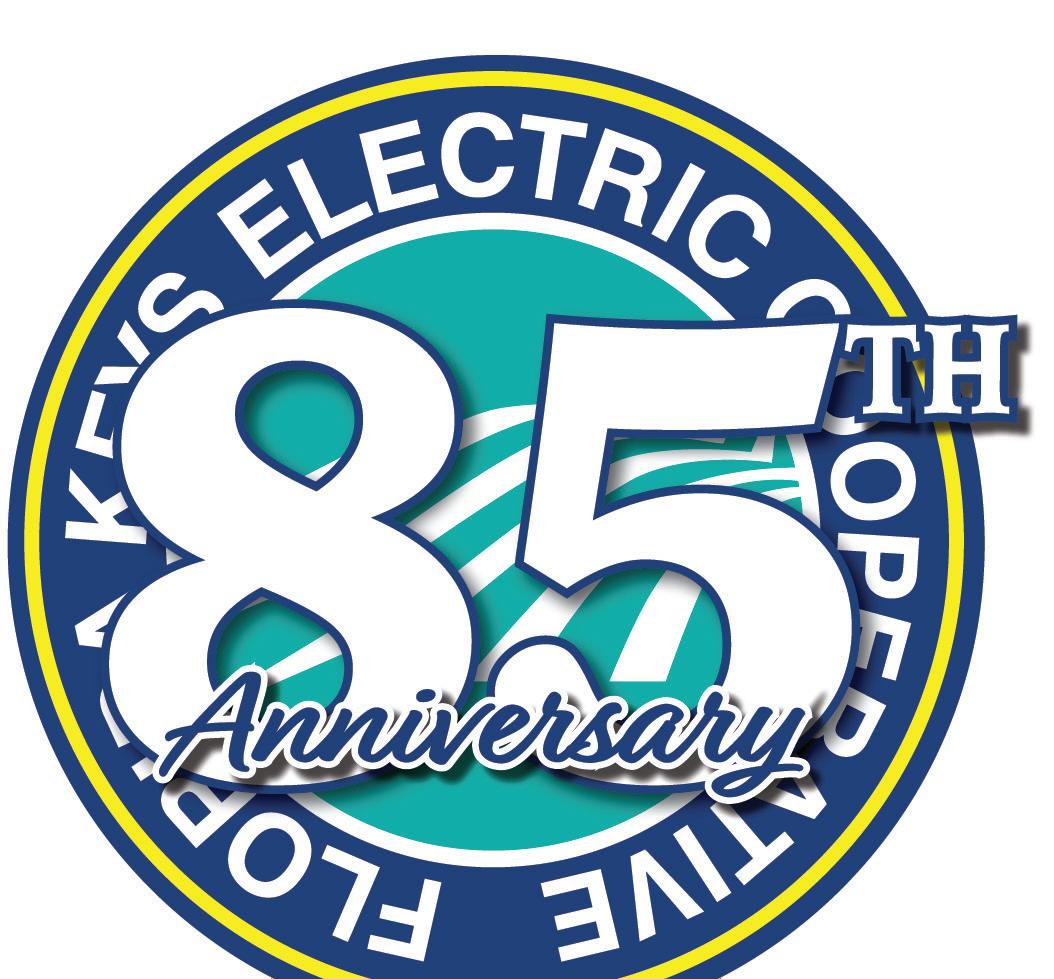


OFFICIAL NOTICE OF THE FLORIDA KEYS ELECTRIC COOPERATIVE ASSOCIATION INC. ANNUAL MEETING
TO THE MEMBERS OF THE COOPERATIVE:
The Florida Keys Electric Cooperative Association, Inc. Annual Meeting will be held Saturday, April 26, 2025, at Coral Shores High School on Plantation Key. Registration will begin at 9:00 a.m. The meeting will consist of reports from the CEO and Board Directors reviewing the April 13, 2024 annual meeting minutes and conducting other necessary business. The meeting will convene at 10:00 a.m.
By Order of the Board of Directors



Gretchen Holland, Secretary
FKEC invites our members to a morning presentation highlighting the co-op 85 years in operation and our decades of work to achieve success. Attendees will receive a registration gift, and complimentary coffee and pastries will be available before the meeting.
The meeting is open to the public, but only FKEC members (your name must be on an active FKEC electric account) can receive free registration gifts and a raffle ticket.




The following insert contains FKEC’s financial statements and notes for 2024. Additional information about the cooperative’s improvements and work can be found in the FKEC 2024 Annual Report.
FLORIDA KEYS ELECTRIC COOPERATIVE ASSOCIATION, INC.
DECEMBER 31, 2024 AND 2023



FLORIDA KEYS ELECTRIC COOPERATIVE ASSOCIATION, INC.
FLORIDA KEYS ELECTRIC COOPERATIVE ASSOCIATION, INC. Exhibit C
STATEMENTS OF CHANGES IN EQUITIES FOR THE YEARS ENDED DECEMBER 31, 2024 AND 2023
Patronage Capital



STATEMENTS OF CASH FLOWS FOR THE YEARS ENDED DECEMBER 31,
CASH FLOWS FROM INVESTING ACTIVITIES
Board of Directors
Florida Keys Electric Cooperative Association, Inc.
Tavernier, Florida
Report on the Audit of the Financial Statements
Opinion
We have audited the financial statements of Florida Keys Electric Cooperative Association, Inc., which comprise the balance sheets as of December 31, 2024 and 2023, and the related statements of revenues, changes in equities and cash flows for the years then ended, and the related notes to the financial statements.
In our opinion, the accompanying financial statements present fairly, in all material respects, the financial position of Florida Keys Electric Cooperative Association, Inc. as of December 31, 2024 and 2023, and the results of its operations and its cash flows for the years then ended in accordance with accounting principles generally accepted in the United States of America.
Basis for Opinion
We conducted our audits in accordance with auditing standards generally accepted in the United States of America (GAAS). Our responsibilities under those standards are further described in the Auditor’s Responsibilities for the Audit of the Financial Statements section of our report. We are required to be independent of Florida Keys Electric Cooperative Association, Inc. and to meet our other ethical responsibilities, in accordance with the relevant ethical requirements relating to our audits. We believe that the audit evidence we have obtained is sufficient and appropriate to provide a basis for our audit opinion.
Responsibilities of Management for the Financial Statements
Management is responsible for the preparation and fair presentation of the financial statements in accordance with accounting principles generally accepted in the United States of America, and for the design, implementation, and maintenance of internal control relevant to the preparation and fair presentation of financial statements that are free from material misstatement, whether due to fraud or error.
In preparing the financial statements, management is required to evaluate whether there are conditions or events, considered in the aggregate, that raise substantial doubt about Florida Keys Electric Cooperative Association, Inc.’s ability to continue as a going concern for one year after the date that the financial statements are issued.
Auditor s Responsibilities for the Audit of the Financial Statements
Our objectives are to obtain reasonable assurance about whether the financial statements as a whole are free from material misstatement, whether due to fraud or error, and to issue an auditor’s report that includes our opinion. Reasonable assurance is a high level of assurance but is not absolute assurance and therefore is not a guarantee that an audit conducted in accordance with GAAS will always detect a material misstatement when it exists. The risk of not detecting a material misstatement resulting from fraud is higher than for one resulting from error, as fraud may involve collusion, forgery, intentional omissions, misrepresentations, or the override of internal control. Misstatements are considered material if there is a substantial likelihood that, individually or in the aggregate, they would influence the judgment made by a reasonable user based on the financial statements.
In performing an audit in accordance with GAAS, we:
• Exercise professional judgment and maintain professional skepticism throughout the audit.
• Identify and assess the risks of material misstatement of the financial statements, whether due to fraud or error, and design and perform audit procedures responsive to those risks. Such procedures include examining, on a test basis, evidence regarding the amounts and disclosures in the financial statements.
• Obtain an understanding of internal control relevant to the audit in order to design audit procedures that are appropriate in the circumstances, but not for the purpose of expressing an opinion on the effectiveness of Florida Keys Electric Cooperative Association, Inc.’s internal control. Accordingly, no such opinion is expressed.
• Evaluate the appropriateness of accounting policies used and the reasonableness of significant accounting estimates made by management, as well as evaluate the overall presentation of the financial statements.
• Conclude whether, in our judgment, there are conditions or events, considered in the aggregate, that raise substantial doubt about Florida Keys Electric Cooperative Association, Inc.’s ability to continue as a going concern for a reasonable period of time.
We are required to communicate with those charged with governance regarding, among other matters, the planned scope and timing of the audit, significant audit findings, and certain internal control–related matters that we identified during the audit.

Warner Robins, Georgia February 17, 2025
1. Nature of Business and Summary of Significant Accounting Policies Reporting Entity and Nature of Operations
Florida Keys Electric Cooperative Association, Inc. (the Cooperative) is a rural electric utility cooperative headquartered in Tavernier, Florida serving members in Monroe County, Florida. The Cooperative’s purpose is to provide electric service to its members by purchasing wholesale power and distributing electric energy on a retail basis through its distribution facilities.
The accounting and reporting policies of the Cooperative generally conform to accounting principles generally accepted in the United States of America (GAAP). The accounting records of the Cooperative are maintained in accordance with the Uniform System of Accounts prescribed by the Federal Energy Regulatory Commission as modified by and adopted by the Rural Utilities Service (RUS) of the United States Department of Agriculture. As a result, the application of GAAP differs in certain respects from the application of those principles by nonregulated enterprises. Additionally, the Cooperative, in its rate-making capacity, has the ability to account for certain revenue and expense deferrals in accordance with the Financial Accounting Standard Board’s (FASB) Accounting Standards Codification (ASC) 980, Regulated Operations
The preparation of financial statements in conformity with GAAP requires management to make estimates and assumptions that affect the reported amounts of assets and liabilities and disclosure of contingent assets and liabilities at the date of the financial statements and reported amounts of revenues and expenses during the reporting period. These estimates include assessing the collectability of receivables, the capitalization of overhead costs, the use and recoverability of materials and supplies, the useful lives for depreciation of utility plant, the recoverability of investments, and the accrual for utility revenue. Estimates and assumptions are reviewed periodically and the effects of revisions are reflected in the period they are determined to be necessary. Actual results could differ from those estimates.
Utility plant additions and improvements are capitalized at cost less related contributions in aid of construction. Cost may include the capitalization of direct costs such as labor and materials and supplies and indirect costs including labor, materials and supplies charges, taxes, insurance, transportation, depreciation, pensions, and other related costs. These costs are accumulated in work in progress accounts and are capitalized to the proper utility plant accounts at the completion of the construction activity. In general, utility plant is capitalized at the time it becomes part of an operating unit and has been energized. However, certain items of plant referred to as special equipment items (meters, transformers, oil circuit reclosures, etc.) are capitalized at the time of purchase along with the related estimated cost of installation. The costs of maintenance, repairs, and replacements of minor items of property are charged to maintenance expense as incurred.
Depreciation of capitalized costs is provided using straight-line rates. When utility plant subject to depreciation is retired or otherwise disposed in the normal course of business, its capitalized cost and cost of removal less salvage are charged to the accumulated provision for depreciation.
The Cooperative evaluates long-lived assets for impairment when events or changes in circumstances indicate the carrying value of such assets may not be recoverable. The determination of whether an impairment has occurred is based on either a specific regulatory disallowance or an estimate of undiscounted future cash flows attributable to the assets, as compared with the carrying value of the assets. If an impairment has occurred, the amount of impairment recognized is determined by estimating the fair value of the assets and recording a provision for loss if the carrying value is greater than the fair value. For assets identified as held for sale, the carrying value is compared to the estimated fair value less selling costs to determine if an impairment provision is required. Until the assets are disposed of, their estimated fair value is reevaluated when circumstances or events change.
Accounting standards require the present value of the ultimate cost for an asset’s future retirement be recorded in the period in which the liability is incurred. The cost should be capitalized as part of the related long-lived asset and depreciated over the asset’s useful life. The Cooperative has no legal retirement obligations related to its utility plant; therefore, a liability for the removal of these assets will not be recorded. Management



believes the actual cost of removal, even though not a legal obligation, will be recovered through rates over the life of the utility plant.
Investments in associated organizations include investments in other cooperative organizations. Investments in other cooperative organizations represent capital investments made primarily to obtain an economical source of product, supply, financing or service and not with the expectation of typical returns. Investments in other cooperative organizations are carried at cost plus allocated equities in accordance with the guidance in ASC 905-325-30. Allocated equities are included in other capital credits in the statements of revenues. Management reviews the balances recorded for individual investments in other cooperative organizations and adjusts the carrying cost if, in their opinion, any of the carrying values have been impaired. Factors reviewed and considered in this process include financial forecasts, debt requirements, market conditions and other factors.
The Cooperative considers all highly liquid investments with maturities of three months or less when purchased, if any, to be cash equivalents.
The Cooperative’s exposure to credit losses primarily relates to its accounts receivable and unbilled revenue balances, which are primarily generated from the sale of electricity to members. The Cooperative evaluates the collectability of its accounts receivable and unbilled revenue balances on a forward‐looking basis considering the economic conditions and other factors relevant to its geographic service area. For the majority of members, the Cooperative uses the accounts receivable aging method to determine an allowance for credit losses. This method requires that the Cooperative classify accounts receivable into aging buckets and calculate a reserve amount for each aging bucket based on historical loss experience, economic conditions and other factors. For its largest customers, the Cooperative records a specific allowance for credit losses to reduce the net receivable to the amount it reasonably believes will be collected. Accounts receivable are charged off when management determines them to be uncollectible and upon approval by the Board of Directors. Recoveries of accounts receivable previously charged off are recorded when received.
The Cooperative manages its credit exposure by assessing the credit quality of members at the beginning of the service and, in some cases, requiring deposits before service is rendered. The Cooperative disconnects customers for non‐payment as established in their member service policies. Management reviews the risk of loss periodically through the assessment of collectability of receivables. Refer also to Note 4.
Materials and supplies, necessary for construction and maintenance of utility plant, are stated at average unit cost. Cost is determined by the average unit cost method. Materials and supplies are charged to inventory when purchased and then expensed or capitalized to utility plant, as appropriate, when installed.
Equities and Margins
The Cooperative is organized and operates under the cooperative form of organization. As such, patronage capital or margins are allocated to patrons based upon individual consumption of electric energy. Retirements of patronage capital to members are made at the discretion of the Board of Directors and are subject to certain restrictions outlined in mortgage agreements. The Cooperative’s bylaws provide that capital credit retirements that remain unclaimed for five years are to be reallocated with current year margins on a patronage basis. As of December 31, 2024 and 2023, the total equities approximate 35.1% and 34.5% of total assets, respectively.
Retail electricity sales to residential, commercial, industrial, and public authorities customers represent the Cooperative’s primary revenue source. The Cooperative has determined that retail electric service to these customers represents an implied daily contract with the customer. The contract is comprised of an obligation to supply and distribute electricity and related capacity. Revenue is recognized, over time, equal to the product of the Board approved tariffs and the volume of the electricity delivered to the customer, or through the passage of time based upon providing the service of standing ready. The Cooperative’s tariffs for electric service include a power cost calculation under which electric rates charged to customers are adjusted to reflect changes in power costs. The Cooperative records electric revenues as billed to customers on a monthly basis. Revenue is accrued for power delivered but not billed at the end of each month. Accrued utility revenue totaled approximately $3,295,513 and $2,644,045 at December 31, 2024 and 2023, respectively.
Rents received for the use by others of property devoted to electric operations by the Cooperative is reflected as rent from electric property.
Other electric revenues include charges for late payments by customers, revenues for miscellaneous services provided to customers, such as changing, connecting and disconnecting service, and revenues from wheeling transactions.
In July 2007, the Cooperative adopted a Formula Revenue Requirement (rate rider), which is adjusted up or down on April 1st of each year to maintain a benchmark return on equity.
The Cooperative collects taxes from its members on behalf of the State of Florida and certain municipalities and county governments, as applicable. Revenues are presented in the statements of revenues net of such taxes collected.
Cost of power is expensed as billed by Florida Power and Light Company (FPL).
The Cooperative operates under the Internal Revenue Code (IRC) Section 501(c)(12) as a tax‐exempt cooperative. IRC Section 501(c)(12) provides, in part, that the Cooperative derive at least 85% of its gross annual revenue from its members to retain the exemption. The Cooperative has met and expects to meet these requirements for applicable tax years. Accordingly, no provision for income taxes has been made in the financial statements. However, the Cooperative does have income from certain activities not directly related to its tax‐exempt purpose that is subject to taxation as unrelated business income. This unrelated related business income results in an immaterial amount of unrelated business income tax included in taxes in the statements of revenues and requires the Cooperative to file Federal Form 990‐T and Florida Form F‐1120.The Cooperative believes that it has appropriate support for any tax positions taken, and as such, does not have any uncertain tax positions that are material to the financial statements. The Cooperative’s Federal Forms 990 and 990‐T (Internal Revenue Service) and Florida Form F‐1120 (Florida Department of Revenue) are subject to examination, generally for three years after they are filed.
The Cooperative assesses if an agreement is a lease at the inception of the contract by determining whether the agreement involves a physically distinct identified asset and if they have the right to retain substantially all the economic benefit for the use of the asset. The Cooperative does not evaluate agreements with a term of less than one year. See Note 2 for more information on the Cooperative’s right‐of‐use assets and Note 6 for more information on the Cooperative’s operating lease liabilities.
Listed below are the major classes of utility plant as of December 31:
Included in general plant at December 31, 2024 and 2023 was right‐of‐use assets related to operating leases in the amount of $3,601,135 and $3,072,925 respectively.
Total depreciation, which includes amortization of right‐of‐use assets related to operating leases, for the years ended December 31, 2024 and 2023, was $8,861,711 and $8,118,192 respectively. For the year ended December 31, 2024, $7,997,511 was charged to depreciation expense for electric plant and $864,200 was charged to overhead clearing. For the year ended December 31, 2023, $7,361,937 was charged to depreciation expense for electric plant and $756,255 was charged to overhead clearing.
Other property and investments consisted of the following at December 31:
4. Accounts Receivable, Contract Assets, and Credit Losses Accounts
Total allowance for credit losses for the years ended December 31, 2024 and 2023 is $26,694 and $21,063, respectively. This allowance is equal to the amount of accounts receivable, net, greater than 60 days past due.
5. Other Equities Other equities consist of the following as of December 31:
6. Debt Mortgage Notes Payable
Mortgages
as of December 31, 2024:
Mortgages consist of the following as of December 31, 2023:
The estimated maturities of mortgage notes payable for the next five years and thereafter are as follows:
Substantially all assets of the Cooperative are pledged as security for the mortgage notes payable to the National Rural Utilities Cooperative Finance Corporation (NRUCFC) and CoBank. The notes are secured by a mortgage agreement among the Cooperative, NRUCFC, and CoBank. The NRUCFC mortgage notes and those under management by NRUCFC mature at various times from 2025 through 2054 with quarterly installments of principal and interest. The CoBank mortgage notes mature at various times between 2026 through 2040. $25,223,090 of the total CoBank notes are interest only and are payable quarterly and scheduled for repricing at various anniversary dates from 2026 through 2032. The principal of these respective notes may be paid at the interest repricing date. Payments of principal other than at interest repricing dates are subject to a prepayment penalty determinable at the time of payment. The remaining CoBank note is a fixed rate note with monthly installments of principal and interest. The mortgage notes contain certain affirmative and negative covenants, including maintenance of certain financial ratios as defined in the mortgage agreements.
The Cooperative had unadvanced loan funds on commitment with CFC at December 31, 2024 of $10,000,000.
The Cooperative has a $15,000,000 line of credit with CFC and a $15,000,000 line of credit with CoBank, limited to a total indebtedness of $15,000,000. Both lines of credit are at variable interest rates and are subject to automatic renewal. The Cooperative had no borrowings outstanding on the CFC line of credit at December 31, 2024 and 2023, respectively. The Cooperative had no borrowings outstanding on the CoBank line of credit at December 31, 2024 and 2023.
The Cooperative also has a $10,000,000 uncommitted revolving credit facility with CoBank that, unless renewed, expires July 31, 2025. The purpose of this line of credit is to finance operating needs and capital expenditures on an uncommitted basis resulting from natural disasters.
As part of its operations, the Cooperative leases various vehicles under leases with remaining lease terms of up to 6 years. Operating lease expenses are charged to overhead clearing accounts and redistributed to various operating expenses and utility plant. Total operating lease expense for 2024 and 2023 was $575,478 and $579,615, respectively.
The following table outlines the minimum future lease payments for the next five years and thereafter:
Defined Benefit Pension Plan
All eligible employees of the Cooperative participate in the National Rural Electric Cooperative Association (NRECA) Retirement Security Plan (RS Plan), a defined benefit pension plan qualified under Section 401 and tax‐exempt under Section 501(a) of the Internal Revenue Code. The RS Plan is considered a multiemployer plan under the accounting standards. The RS Plan sponsor’s Employer Identification Number is 53‐0116145 and the Plan Number is 333.
A unique characteristic of a multi‐employer plan compared to a single employer plan is that all plan assets are available to pay benefits of any plan participant. Separate asset accounts are not maintained for participating employers. This means that assets contributed by one employer may be used to provide benefits to employees of other participating employers.
The Cooperative’s contributions to the RS Plan in 2024 and in 2023 represented less than 5% of the total contributions made to the RS Plan by all participating employers. The Cooperative made contributions to the RS Plan of $2,289,306 and $2,171,085 in 2024 and 2023, respectively. There have been no significant changes that affect the comparability of 2024 and 2023 contributions.
In the RS Plan, a “zone status” determination is not required, and therefore not determined, under the Pension Protection Act of 2006 (the PPA). In addition, the accumulated benefit obligations and plan assets are not determined or allocated separately by individual employer. In total, the RS Plan was over 80% funded on January 1, 2024 and over 80% funded on January 1, 2023 based on the PPA funding target and the PPA actuarial value of assets on those dates.
Because the provisions of the PPA do not apply to the RS Plan, funding improvement plans and surcharges are not applicable. Future contribution requirements are determined each year as part of the actuarial valuation of the RS Plan and change as a result of RS Plan experience.
Defined Contribution Pension Plan
The employees also participate in a 401(k) Plan, a defined contribution plan provided through NRECA. The Cooperative makes monthly contributions to the 401(k) Plan. The cost to the Cooperative was $471,542 and $464,474 for the years ended December 31, 2024 and 2023, respectively.
8. Deferred Charges
Deferred charges consist of the following as of December 31:



Computer software is amortized over 60 months. Amortization expense for 2024 and 2023, was $41,615 and $29,196, respectively.
In 2010, the Board of Directors acting as the rate making authority of the Cooperative approved a resolution to amortize the charges associated with the abandoned North Key Largo Substation project over a period of 20 years. Amortization expense for the years ended December 31, 2024 and 2023 was $183,444.
9. Nonoperating Margins (Loss)
Nonoperating margins (loss) consist of the following for the years ended December 31:
10. Concentrations
Financial instruments that potentially subject the Cooperative to concentrations of credit risk consist principally of cash and cash equivalents and accounts receivable.
The Cooperative’s headquarters is located in Tavernier, Florida. Its service area includes portions of several surrounding counties. The geographic concentration of the Cooperative’s member customers results in a concentration of credit risk with respect to the collection of accounts receivable. The Cooperative can require a deposit from its members which may be applied to unpaid bills in the event of default. Consumer deposits, considered contract liabilities, at December 31, 2024, 2023 and 2022 were $6,620,144, $6,713,446, and $6,557,752, respectively.
The Cooperative maintains its cash deposits in a local financial institution, and the accounts at this institution are generally insured by the Federal Deposit Insurance Corporation (FDIC) up to $250,000. In addition, the Cooperative has a repurchase agreement with this financial institution which secures an additional $650,000 of funds not insured by the FDIC. Cash balances throughout the year periodically exceed the insured and secured deposit limits. If the financial institution were not to honor their contractual liabilities, the Cooperative could incur losses. Management is of the opinion that there is no material risk because of the financial strength of the institution.
The Cooperative’s nature of business is such that it ordinarily results in a certain amount of litigation. In the opinion of management, there is no litigation in which the outcome will have a material effect on the financial statements. Additionally, the Cooperative is fully insured with general liability and an excess coverage umbrella policy in the event of an unfavorable outcome that would cover any potential settlement.
12. Commitments and Contingencies
Under its long‐term agreement to provide capacity and energy by FPL to the Cooperative, the Cooperative is committed to purchase full requirements of capacity and energy from FPL. The agreement carries an initial term of 20 years through December 31, 2031 and will automatically be extended for an additional 20 year term. Either party may terminate the agreement on the last day of any calendar year after December 31, 2031 by giving the other party at least seven years written notice. The rates paid under the agreement are calculated annually pursuant to a formula that reflects FPL’s actual full resource production costs.
The Cooperative and Keys Energy Services (KES) have a long‐term joint transmission agreement extending through December 31, 2032, whereby the Cooperative and KES will share in the investment, operation, and maintenance costs of the transmission facilities located between the Dade/Monroe County line and the service territory boundary between the two utilities. Within the capacity of the transmission system, the Cooperative will be entitled to 60.00% of the transfer limit, and KES will be entitled to 40.00% of the transfer limit.
The investment share for each party is determined based upon their relative use of the transmission facilities, considering both the flow of power measured in megawatts and the length of the respective flows. The Cooperative's investment share is 43.50%, and KES's share is 56.50%. The investment of each respective party in this agreement is at parity.
In its role as the operating agent under this agreement, the Cooperative routinely bills KES for KES’s share of the costs incurred relating to this agreement. KES has the right to audit, at its expense, the Cooperative’s books and records which relate to and are necessary for verification of charges and costs included in bills rendered with respect to this agreement. The Cooperative believes that any amounts owed back to KES as a result of such audits, if any, would be immaterial.
Labor Force Contract
Approximately 45% of the Cooperative’s labor force is subject to a collective bargaining agreement. A five year agreement was negotiated and approved for the period March 1, 2020 to February 28, 2025 between the Cooperative and the International Brotherhood of Electrical Workers (IBEW).
The Cooperative assessed events that have occurred subsequent to December 31, 2024 through February 17, 2025 for potential recognition and disclosure in the financial statements. The following event occurred during that time that requires disclosure:
Subsequent to year end, the Cooperative received an advance of $1,000,000 from CFC under its existing LOC agreement in Note 6 with an interest rate of 6.30%. To